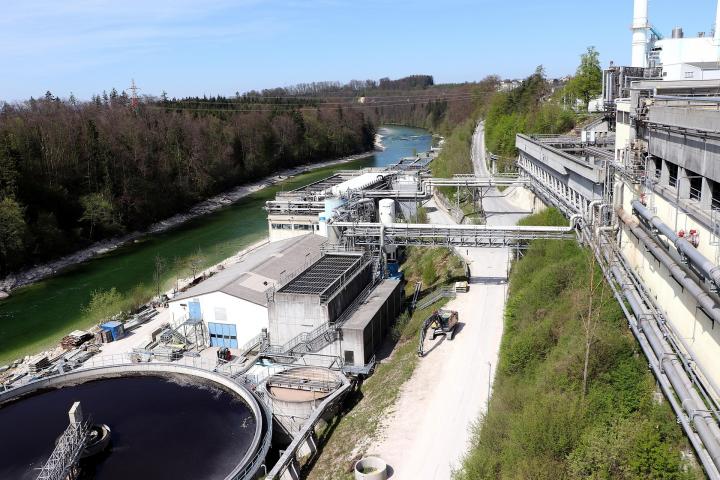
Disrupted supply chains, volatile market conditions, and lagging investments have made investing in the water theme challenging. In recent years, European investors have withdrawn billions from water funds.
Has impact investing in water had its best days? Overall, the figures from recent years are far from encouraging. Market leader Pictet Asset Management, however, remains unfazed, says Cédric Lecamp. For the Swiss asset manager, he heads Pictet Water, Europe’s largest thematic water fund, with around 7.5 billion euro in assets under management. A year ago, that figure was still over 8 billion. What explains the decline?
Inflows and outflows in the Morningstar European Equity Water category
Lecamp points to several uncertainties, volatile markets, and high stock market fluctuations in particular. “We do see that investors with a short-term horizon are worried about stock market volatility. They’re reducing their equity exposure, which also affects Pictet Water.” Long-term investors, however, take a different view: “In recent months, we’ve seen growing interest from institutional investors who actually want to take advantage of the sometimes erratic price movements in equities.”
Notably, the Article 9 fund has been ‘soft closed’ since 2017: new capital can still be added, but only by investors who joined before 2017.
Access for everyone
 That doesn’t change the fact that the rapid growth of water funds seems to be over. Yet the category’s relevance hasn’t diminished, Lecamp (photo) emphasized—quite the opposite. “Globally, we’re falling behind in achieving the United Nations’ goal of providing universal access to clean drinking water and proper wastewater treatment by 2030. Our own research shows that about 1 to 1.4 percent of global GDP needs to be invested annually to reach that goal, but right now, only 0.4 to 0.6 percent of GDP is being spent.”
That doesn’t change the fact that the rapid growth of water funds seems to be over. Yet the category’s relevance hasn’t diminished, Lecamp (photo) emphasized—quite the opposite. “Globally, we’re falling behind in achieving the United Nations’ goal of providing universal access to clean drinking water and proper wastewater treatment by 2030. Our own research shows that about 1 to 1.4 percent of global GDP needs to be invested annually to reach that goal, but right now, only 0.4 to 0.6 percent of GDP is being spent.”
Net assets in the Morningstar European Equity Water category
Progress is simply too slow. “Governments are investing too little, and private sector involvement is insufficient.” That’s where the business case for water investing lies, according to Pictet. “We see extensive opportunities for public-private partnerships. Currently, around 20 percent of the global population is served by privately owned water companies, whereas in a comparable sector such as telecommunications, that private share is about 60 percent. In energy supply, it’s around 45 percent.”
Smart pumps
Pictet expects the private sector to play a much greater role in the coming years, especially in South America and Asia. By the end of this decade, it should be serving 30 percent of the global population. Part of that growth will come from direct service delivery—companies obtaining government concessions—but water technology and environmental services, such as wastewater treatment, are also attractive investment areas. Water technology is relevant for infrastructure (smart pumps and valves), monitoring (measuring water quality), and improving water-use efficiency.
“There are no iPhone or semiconductor producers in the water universe”
That means water investing largely comes down to investing in the industrial sector, which makes up 66 percent of Pictet Water. At a respectful distance, materials form the fund’s second-largest sector (13 percent), followed by healthcare (8 percent) and utilities (7 percent). This allocation carries specific risks, Lecamp explained. “In water technology—about 20 percent of the fund—companies struggled last year with disrupted supply chains. Those disruptions mainly affected monitoring and consumer services, where supply chains are more globalized and dependent on raw material imports. On top of that, about three-quarters of our holdings are in American companies.”
Active share 98 percent
The trade war, therefore, didn’t leave Pictet Water’s portfolio untouched. But even aside from that, investing in water is something entirely different from investing in the MSCI ACWI. Lecamp: “That index is dominated by technology and communication services. Our active share compared to that index is 98 percent. There’s some overlap—around 68 percent—but almost no weightings in common. In other words, there are no iPhone or semiconductor producers in the water universe, and we’ve always seen more opportunities in companies with smaller market capitalizations than average. The strategy is practically independent of broader indices.”
Pictet Water returns